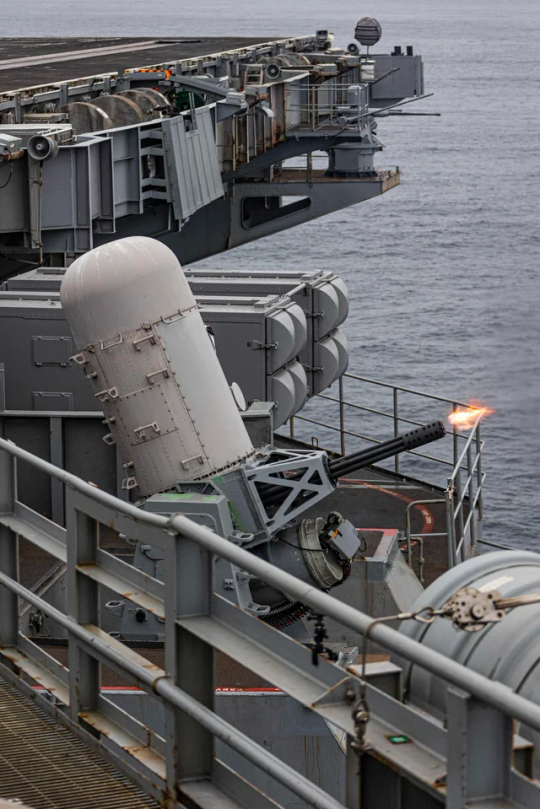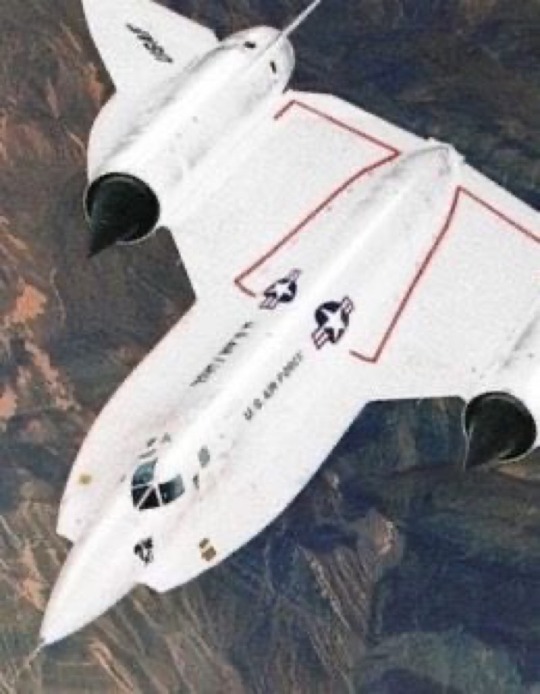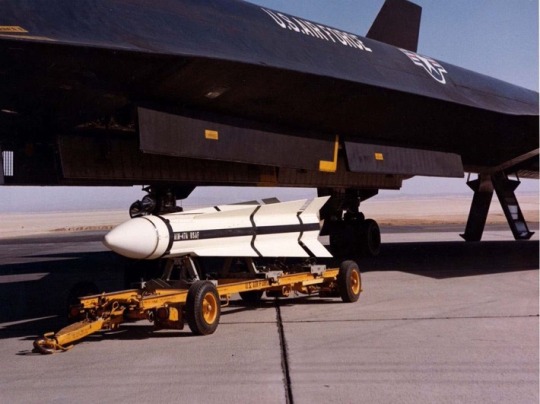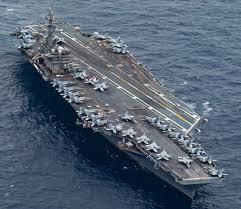#Rolling Airframe Missiles
Explore tagged Tumblr posts
Text
youtube
#youtube#militarytraining#LPD 22#Naval Firepower#USS San Diego#Modern Warfare#US Navy#Naval Operations#Defense Technology#Amphibious Assault Ship#Military Training#Sea Warfare#Rolling Airframe Missiles#Anti-Ship Missiles#Naval Combat#Maritime Security#Military Exercises#Missile Systems#Guided Missiles#Military Aviation#Navy Ships
2 notes
·
View notes
Text

Some of the defensive armament of USS Abraham Lincoln (CVN 72). Seen in the photo are a Phalanx, a Sea Sparrow launcher, and a MK 38 25mm gun mount. She also has Rolling Airframe Missile launchers. Oct. 25, 2023
50 notes
·
View notes
Text



The subject of paint on the fastest airplane in the world is fascinating . White bird? Nope, it never happened. Fake Picture! Although ("Pastels are the best stealth colors," Ben Rich once observed, "real men don't fly pink jets.") This is the YF-12 airframe created by the Skunk Works, who also designed the (A-12 and the SR -71 and the M -21) but the YF-12 held four air to air missiles. YF-12 was created to intercept any incoming enemy bombers quickly. It was discovered that the way the enemy would attack would be with inter-ballistic missiles instead of overhead bombers, making the YF-12 obsolete before they made the 100 airplanes that had been ordered.
The program was canceled. The Air Force used three YF-12s and then transferred them to NASA. There is one YF 12 remaining and it is at the Museum of the Air Force in Dayton, Ohio half of YF 12 remains it is the back on SR 71, 981. Also known as the bastard is at Hill Air Force Base, Utah the other YF- 12 crashed. (it is currently being restored.)
Another frustrating example was the stubborn insistence of the Air Force to have its insignia painted on the wings and fuselage of the SR-71 Blackbird, even though no one would ever see it at eighty-five thousand feet; finding a way to keep the enamel from burning off under the enormous surface temperatures and maintain its true red, white, and blue took our chief chemist, Mel George, weeks of experimentation and cost the government thousands of unnecessary dollars. After we succeeded, the Air Force decided that the white on the emblem against the all-black fuselage was too easy to spot from the ground, so we repainted it pink." (p. 327) Ben Rich from his book “Skunk Works”
Using a law of thermodynamics, Ben Rich convinced Kelly Johnson to paint the A-12 Black. It was very rare when Kelly Johnson admitted he was wrong.
Overnight, however, he apparently had second thoughts, or did some textbook reading on his own, and at the next meeting, he turned to me as the first order of business. “On the black paint,” he said, “you were right about the advantages, and I was wrong.” He handed me a quarter. It was a rare win. So Kelly approved my idea of painting the airplane black, and by the time our prototype rolled out, the airplane became known as the Blackbird.
― Ben R. Rich, Skunk Works: A Personal Memoir of My Years of Lockheed
~Linda Sheffield
@Habubrats71 via X
14 notes
·
View notes
Text
Ceramic Matrix Composites Market Trends 2025: Insights Driving the Future

Straits Research is pleased to announce the publication of its latest in-depth market report on the Ceramic Matrix Composites Market, providing actionable insights, growth drivers, emerging trends, and opportunities within this rapidly evolving industry.
Market Overview
The Ceramic Matrix Composites Market was valued at USD 4.19 Billion in 2024 and is projected to grow significantly, reaching USD 11.54 Billion by 2033. This robust growth reflects a compound annual growth rate (CAGR) that underscores the increasing demand for high-performance materials across diverse industries, including aerospace, defense, and energy.
Ceramic Matrix Composites Market Definition
Ceramic Matrix Composites (CMCs) are a class of advanced materials that consist of ceramic fibers embedded in a ceramic matrix. This unique composition provides superior properties such as high-temperature resistance, excellent mechanical strength, low weight, and corrosion resistance. These characteristics make CMCs a preferred choice for applications in aerospace engines, power generation turbines, and defense systems.
Get Free Request Sample Report @ https://straitsresearch.com/report/ceramic-matrix-composites-market/request-sample
Key Players in the Ceramic Matrix Composites Market
The report profiles leading companies shaping the future of the Ceramic Matrix Composites Market:
3M Company
General Electric Company
Kyocera Corporation
COI Ceramics, Inc.
Coorstek, Inc.
Lancer Systems LP
Ultramet, Inc.
SGL Carbon Company
Ube Industries, Ltd.
Applied Thin Films, Inc.
Rolls-Royce plc
United Technologies
Precision Castparts Corp.
Touchstone Research Laboratory
These players are at the forefront of innovation, leveraging cutting-edge technology to deliver high-quality ceramic matrix composites for diverse applications.
Latest Trends:
Advancements in Manufacturing: Innovations in production techniques, including additive manufacturing and automated fiber placement, are driving cost efficiency and scalability.
Increased Adoption in Aerospace: The rising demand for lightweight, fuel-efficient aircraft has spurred the use of CMCs in turbine components and airframes.
Sustainability Focus: Efforts to minimize carbon emissions in industries like power generation and automotive are accelerating the adoption of CMCs.
Emerging Markets: Expanding aerospace and defense sectors in countries such as China and India present significant growth opportunities.
Key Growth Factors
Demand for Lightweight Materials: Industries like aerospace and automotive are prioritizing lightweight materials to enhance fuel efficiency and performance.
High-Temperature Resistance: The ability of CMCs to withstand extreme conditions is driving their adoption in power turbines and jet engines.
Defense Applications: Growing investments in advanced military systems are increasing the use of CMCs in missile and radar components.
Technological Innovations: Continuous R&D efforts are yielding advanced composites with superior performance characteristics.
Opportunities
Expanding Aerospace Industry: Increasing global air travel and investments in next-generation aircraft provide significant growth potential.
Green Energy Applications: The shift toward renewable energy sources like wind and solar power requires high-performance materials, creating demand for CMCs in energy storage and turbine components.
Regional Growth: Emerging economies with expanding industrial bases are expected to drive market growth.
Market Segmentation
The report provides a comprehensive segmentation analysis:
1. By Product:
Oxide
Silicon Carbide
Carbon
Others
2. By Applications:
Aerospace
Defense
Energy & Power
Electrical & Electronics
Others
3. By Fiber Type:
Continuous
Woven
Others (felt/mat, chopped, twill, braided, ropes & belts)
4. By Fiber Material:
Alumina Fibers
Amorphous Ceramic Fibers (RCF)
Silicon Carbide Fibers (SIC)
Buy Now@ https://straitsresearch.com/buy-now/ceramic-matrix-composites-market
Contact Us
For more detailed insights and a complete analysis of the Ceramic Matrix Composites Market, contact Straits Research:
Email: [email protected]
Website: https://straitsresearch.com
#Ceramic Matrix Composites Market#Ceramic Matrix Composites Market Share#Ceramic Matrix Composites Market Size#Ceramic Matrix Composites Market Research#Ceramic Matrix Composites Market Industry#What is Ceramic Matrix Composites Market?
0 notes
Text
Sistemi RAM per le Marine dei Paesi Bassi e del Belgio Le Marine Reali dei Paesi Bassi e del Belgio hanno acquistato congiuntamente nove Rolling Airframe Missile Launching Systems
#Forze_Armate#Forze_Navali#belgio#germania#Marina_Reale_Belga#Marina_Reale_dei_Paesi_Bassi#Paesi_Bassi#Rolling_Airframe_Missiles#stati_uniti
0 notes
Link
0 notes
Text
Titans of the Sea: The Power and Influence of Nuclear-Powered Aircraft Carriers
Introduction

Nuclear-powered aircraft carriers represent the pinnacle of naval engineering and strategic military capability. The USS Nimitz (CVN 68), the lead ship of its class, exemplifies the power and versatility of these floating fortresses. Coupled with formidable aircraft like the F/A-18 Hornet, the USS Nimitz and its counterparts serve as crucial assets in projecting military power and maintaining global security. This essay delves into the design, capabilities, and strategic importance of nuclear-powered aircraft carriers, with a special focus on the USS Nimitz and its fleet of F/A-18 Hornets.
Evolution of Nuclear-Powered Aircraft Carriers
The concept of nuclear-powered aircraft carriers emerged during the Cold War as nations sought to extend the reach and endurance of their naval forces. Unlike conventional diesel-powered ships, nuclear-powered carriers do not require frequent refueling, allowing them to remain deployed for extended periods and operate at higher speeds.
The USS Enterprise (CVN 65), commissioned in 1961, was the world’s first nuclear-powered aircraft carrier. Its success paved the way for the development of the Nimitz-class carriers. The USS Nimitz, commissioned in 1975, was the first of ten nuclear-powered carriers in this class. These ships have since become the backbone of the U.S. Navy, embodying the principles of sustained power projection and rapid response.
Design and Capabilities of the USS Nimitz
The USS Nimitz is an engineering marvel, measuring over 1,092 feet in length and displacing around 100,000 tons. It can accommodate a crew of approximately 5,000 personnel, including the ship's company and the air wing. Its flight deck spans about 4.5 acres, providing ample space for the launch and recovery of various aircraft.
Powered by two A4W nuclear reactors, the USS Nimitz can achieve speeds in excess of 30 knots. These reactors provide the ship with nearly unlimited operational range, limited only by the need for resupply of food and other consumables. The ship's propulsion system, combined with its advanced navigation and control technologies, enables it to maneuver effectively even in challenging conditions.
The USS Nimitz is equipped with a robust suite of defensive systems, including the RIM-7 Sea Sparrow and RIM-116 Rolling Airframe Missiles, which provide protection against aerial threats. Additionally, the Phalanx Close-In Weapon System (CIWS) offers a last line of defense against incoming missiles and aircraft. The ship’s radar and sensor systems ensure comprehensive situational awareness, enhancing its defensive and offensive capabilities.
The Role of F/A-18 Hornets
Fighters like the F/A-18 Hornet is a twin-engine, multirole fighter aircraft designed for carrier-based operations. Its versatility allows it to perform a wide range of missions, including air superiority, ground attack, reconnaissance, and close air support. The Hornet has been a mainstay of the U.S. Navy's air wings since its introduction in the 1980s and continues to be a vital component of carrier strike groups.
The F/A-18 Hornet’s design emphasizes survivability and versatility. It features advanced avionics, reduced radar cross-section, and electronic warfare capabilities, making it a formidable opponent in air combat. Its twin-engine configuration provides redundancy and improved performance, particularly important for operations from the demanding environment of an aircraft carrier.
One of the key advantages of the F/A-18 Hornet is its ability to switch roles rapidly. It can carry a diverse array of ordnance, from air-to-air missiles to precision-guided bombs, enabling it to engage both aerial and ground targets with high effectiveness. This flexibility is crucial for modern naval operations, where threats can emerge from multiple domains simultaneously.
Strategic Importance of the USS Nimitz
The USS Nimitz serves as a mobile airbase, capable of projecting power and deterrence far beyond U.S. territorial waters. Its presence in a region can significantly influence the strategic calculations of potential adversaries. The carrier’s ability to deploy a wide array of aircraft, including the F/A-18 Hornet, allows it to conduct sustained air operations over extended periods.
One of the primary missions of the USS Nimitz is to ensure freedom of navigation and the security of maritime trade routes. Given that a significant portion of global trade passes through strategic chokepoints like the Strait of Hormuz and the South China Sea, the carrier’s ability to operate in these areas is of paramount importance. Its deployment can reassure allies and deter aggression, contributing to regional stability.
In times of conflict, the USS Nimitz can serve as a command and control hub, coordinating the actions of various naval, air, and ground forces. Its air wing, centered around aircraft like the F/A-18 Hornet, can perform a wide range of missions, from establishing air superiority to providing close air support for ground troops. The carrier’s versatility makes it a critical asset in both conventional and asymmetric warfare scenarios.
The Future of Carrier Aviation
While the USS Nimitz and its sister ships remain at the forefront of naval power, the future of carrier aviation is evolving. New classes of carriers, such as the Gerald R. Ford-class, incorporate advanced technologies like electromagnetic aircraft launch systems (EMALS) and advanced arresting gear (AAG). These innovations aim to improve the efficiency and capability of carrier operations, allowing for the deployment of next-generation aircraft.
Additionally, the integration of unmanned aerial systems (UAS) into carrier air wings represents a significant shift. Drones like the MQ-25 Stingray, designed for aerial refueling, will extend the range and endurance of manned aircraft like the F/A-18 Hornet. This development will enhance the operational flexibility of carrier strike groups, allowing them to project power even further.
Furthermore, advancements in stealth technology and electronic warfare are likely to shape the future composition of carrier air wings. Aircraft like the F-35C Lightning II, with its advanced stealth and sensor capabilities, are expected to complement and eventually replace older platforms like the F/A-18 Hornet. These next-generation fighters will ensure that carrier strike groups remain at the cutting edge of military capability.
Conclusion

Nuclear-powered aircraft carriers, epitomized by the USS Nimitz, are critical instruments of naval power and global stability. Their ability to operate independently for extended periods, combined with the versatile capabilities of aircraft like the F/A-18 Hornet, makes them indispensable to modern military strategy. As technological advancements continue to shape the future of carrier aviation, the legacy of the USS Nimitz and its contributions to naval warfare will endure, ensuring that these floating fortresses remain at the heart of American naval dominance for decades to come. The integration of new technologies and platforms will further enhance their operational effectiveness, enabling them to meet the evolving challenges of global security.
0 notes
Text
Rolling Airframe Missile
https://www.navalgazing.net/RAM
0 notes
Text
US State Department Approves Sale of RAM Block 2B Tactical Missiles to Japan
The State Department has made a determination approving a possible Foreign Military Sale to the Government of Japan of Rolling Airframe Missiles (RAM) Block 2B Tactical Missiles and related equipment for an estimated cost of $74.6 million. The Government of Japan has requested to buy up to sixty-three (63) Rolling Airframe Missiles (RAM) Block 2B Tactical Missiles, RIM-116E. Also included are RAM Guided Missile Round Pack Tri-Pack shipping and storage containers; training equipment; manuals; technical documentation; technical and logistic support services; support for establishment of an Intermediate Level Maintenance Facility (ILMF); and other related elements of logistics and program support. The principal contractor will be Raytheon Missiles and Defense Company, Tucson, AZ. There are no known offset agreements proposed in connection with this potential sale.
The State Department has made a determination approving a possible Foreign Military Sale to the Government of Japan of Rolling Airframe Missiles (RAM) Block 2B Tactical Missiles and related equipment for an estimated cost of $74.6 million. The Government of Japan has requested to buy up to sixty-three (63) Rolling Airframe Missiles (RAM) Block 2B Tactical Missiles, RIM-116E. Also included are RAM…

View On WordPress
0 notes
Text
Αμερικανική εταιρεία παρήγγειλε σε ελληνική αμυντική εταιρεία σύστημα προστασίας πολεμικών πλοίων
Η αμερικανική εταιρεία Raytheon έκανε παραγγελία αξίας 4,16 εκατομμυρίων δολαρίων στην ελληνική αμυντική εταιρεία INTRACOM DEFENSE (IDE) για το Σύστημα Αεροπορικής και Πυραυλικής Άμυνας RAM, γράφει τούρκικο δημοσίευμα. Η παραγγελία αφορά το σύστημα ‘Rolling Airframe Missile’ -RAM, το οποίο στοχεύει στην προστασία των ναυτικών πλατφορμών από αεροπορικές και πυραυλικές επιθέσεις. Η παραγγελία…
View On WordPress
0 notes
Video
youtube
USS Boxer (LHD 4) Unleashes RIM-116 Rolling Airframe Missile: Live-Fire ...
#youtube#USNavy USSBoxer LHD4 RIM116 RollingAirframeMissile LiveFireDisplay PacificWaters NavalWarfare MilitaryTechnology MissileDefence CombatTraini
0 notes
Text
Αμερικανική εταιρεία παρήγγειλε σε ελληνική αμυντική εταιρεία σύστημα προστασίας πολεμικών πλοίων
Η αμερικανική εταιρεία Raytheon έκανε παραγγελία αξίας 4,16 εκατομμυρίων δολαρίων στην ελληνική αμυντική εταιρεία INTRACOM DEFENSE (IDE) για το Σύστημα Αεροπορικής και Πυραυλικής Άμυνας RAM, γράφει τούρκικο δημοσίευμα. Η παραγγελία αφορά το σύστημα ‘Rolling Airframe Missile’ -RAM, το οποίο στοχεύει στην προστασία των ναυτικών πλατφορμών από αεροπορικές και πυραυλικές επιθέσεις. Η παραγγελία…
View On WordPress
0 notes
Text
Αμερικανική εταιρεία παρήγγειλε σε ελληνική αμυντική εταιρεία σύστημα προστασίας πολεμικών πλοίων
Η αμερικανική εταιρεία Raytheon έκανε παραγγελία αξίας 4,16 εκατομμυρίων δολαρίων στην ελληνική αμυντική εταιρεία INTRACOM DEFENSE (IDE) για το Σύστημα Αεροπορικής και Πυραυλικής Άμυνας RAM, γράφει τούρκικο δημοσίευμα. Η παραγγελία αφορά το σύστημα ‘Rolling Airframe Missile’ -RAM, το οποίο στοχεύει στην προστασία των ναυτικών πλατφορμών από αεροπορικές και πυραυλικές επιθέσεις. Η παραγγελία…
View On WordPress
0 notes
Text
Αμερικανική εταιρεία παρήγγειλε σε ελληνική αμυντική εταιρεία σύστημα προστασίας πολεμικών πλοίων
Η αμερικανική εταιρεία Raytheon έκανε παραγγελία αξίας 4,16 εκατομμυρίων δολαρίων στην ελληνική αμυντική εταιρεία INTRACOM DEFENSE (IDE) για το Σύστημα Αεροπορικής και Πυραυλικής Άμυνας RAM, γράφει τούρκικο δημοσίευμα. Η παραγγελία αφορά το σύστημα ‘Rolling Airframe Missile’ -RAM, το οποίο στοχεύει στην προστασία των ναυτικών πλατφορμών από αεροπορικές και πυραυλικές επιθέσεις. Η παραγγελία…
View On WordPress
0 notes
Text
Missili AMRAAM e RAM per la Germania In Germania la Commissione Bilancio del Bundestag, il Parlamento Federale, ha approvato due programmi relativi l’acquisto di missili RIM-116 RAM (Rolling Airframe Missile) per la Marina e di missili AMRAAM per l’Aeronautica. In particolare, i parlamentare hanno autorizzato l’acquisto di missili RIM-116 RAM Block 2B per 372,6 milioni di euro che saranno stanziati dal Fondo Speciale cd. “Bundeswehr” da 100 miliardi di euro approvato nel 2022. I missili guidati RIM-116 RAM Block 2B saranno consegnati dall’agosto 2029 al novembre 2031. Saranno inoltre conclusi dalla Difesa Tedesca contratti aggiuntivi, anche per l’acquisto di contenitori per il trasporto e lo stoccaggio dei
#Forze_Aeree#Forze_Armate#Forze_Navali#AIM_120C8#Diehl_Defence#eurofighter#germania#luftwaffe#marina_tedesca#Raytheon_Missiles_and_Defense#RIM_116E_Block_2B#stati_uniti
0 notes
